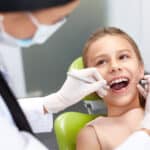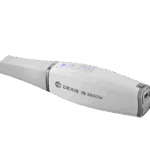A University of Michigan (U-M) [removed]paper[/removed], published in the journal Dentomaxillofacial Radiology, suggests that some orthodontists may be exposing young patients to unnecessary radiation when they order 3D x-ray imaging for simple orthodontic cases before considering traditional 2D imaging.
According to Sunil Kapila, BDS, MS, PhD, lead author of the paper and chair of the department of orthodontics and pediatric dentistry at the U-M School of Dentistry, there is ongoing debate in the orthodontic community over if and when to use cone beam computed tomography (CBCT) for orthodontic diagnosis and treatment planning.
Kapila’s paper suggests that 2D imaging would suffice in most routine orthodontic cases. While Kapila concedes 3D images are better quality, the tradeoff is higher radiation exposure for patients.
The amount of radiation produced by 3D CBCT imaging varies substantially, depending on the machine used and the field of view exposed. Some clinicians, however, may not realize how much higher that radiation is compared to conventional radiographs. Once CBCT image can emit 87 to 200 microsieverts or more, compared to 4 to 40 microsieverts for an entire series of 2D x-rays required for orthodontic diagnosis, Kapila said. Considering that the average US population is exposed to approximately 8 microsieverts of background radiation per day, 200 microsieverts equates to about 25 days worth of cosmic and terrestrial radiation.
"Most of the patients who need orthodontic treatment are young adults and pediatric patients," said Erika Benavides, DDS, PhD, clinical assistant professor in the department of periodontics and oral medicine at U-M. "Keeping in mind that the radiation received has cumulative effects, adding unnecessary radiation exposure to the patient may result in higher biological risks, particularly in the more susceptible young children. This is why selecting the patients that would benefit the most from this additional exposure needs to be done on a case-by-case basis."
Both Kapila and Benavides said, when used judiciously, CBCT is an invaluable tool with a definite place in orthodontic treatment planning.
To that end, Kapila and colleagues reviewed existing data on CBCT and found that this type of imaging is typically recommended in cases that include those with impacted teeth, temporomandibular joint disease, craniofacial abnormalities, and jaw deformities. While other patients could also benefit from 3D imaging, the decision to scan these patients should be made on a case-by-case basis after a clinical exam and evaluation of the specific patient needs.







